
|
POINTIE TALKIE
A pocket booklet provided to United States Army Air Force personnel in the China-Burma-India Theater of World War II. It was intended for use in the event they were downed over China.
The concept was simple, English questions, phrases or words on one side, Chinese language character responses on the other. To communicate with any native Chinese encountered, the flyer would find a phrase in English and point to the Chinese language translation. He would then show the native the possible Chinese language responses.
For example the flyer could ask a question such as Is there someone here who can speak English?. Opposite the question were possible responses Yes or No. The two could point to talk or "Pointie Talkie."
The problem was that the flyer would have to be lucky enough to find someone who could read. Most of the Chinese encountered by flyers were illiterate. Later versions of the Pointie Talkie included pictures to help with communication.
In addition to the Chinese language, the booklet also contained sections for Burmese, French, Annamese, Thai (Siamese), Shan, Lolo, and Lao. Different versions were used in other theaters and there were also role-specific versions such as one in Russian for B-29 bomber flyers on missions to Japan.
All images on this page can be enlarged by clicking on the image to open a new window which will display the enlarged image.
Below left is a sample page which gives directions on how to use vocabulary. Other pages (below right) contained additional common phrases to be used in communicating with the native people. This page lists common things the flyer might want to ask about such as People and Places, Weapons, Useful Items.
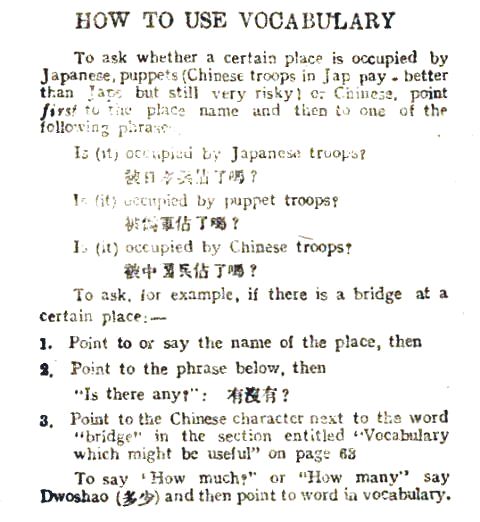

|
Other sections contained phrases and words on various subjects including: finding an interpreter, courtesy phrases, food and drink, comfort and lodging, servicing the plane, cargo, communications, air raid alarm, injury, in enemy territory, other airmen, figures, and place names.
One of the first things the flyer was instructed to do was make contact with a friendly local official. Below are facing pages intended to help accomplish that goal. Questions are on the left-hand page and possible responses on the right-hand page. Corresponding questions and answers are numbered.


|
Below right, names of places were provided to help determine where one was or where they were headed. Thie page below right provides numbers to help communicate days, hours, minutes, etc.

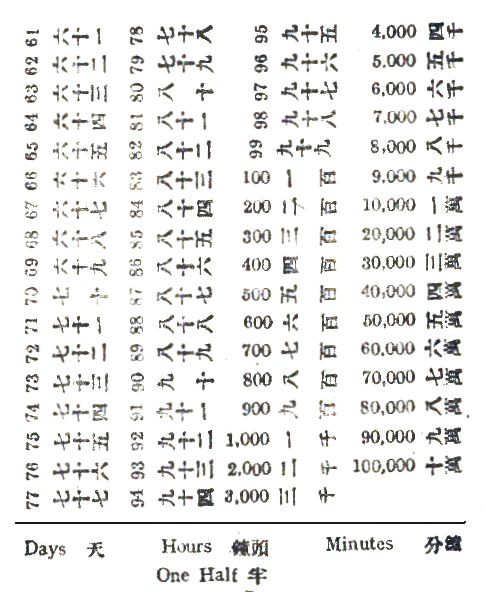
|
The Pointie Talkie contained a variation of the Blood Chit issued by Generalissimo Chiang Kai-shek. Different versions were available for different sections of China (Lolo version shown). The order promises rewards to those who help and threatens punishment to those who don't.
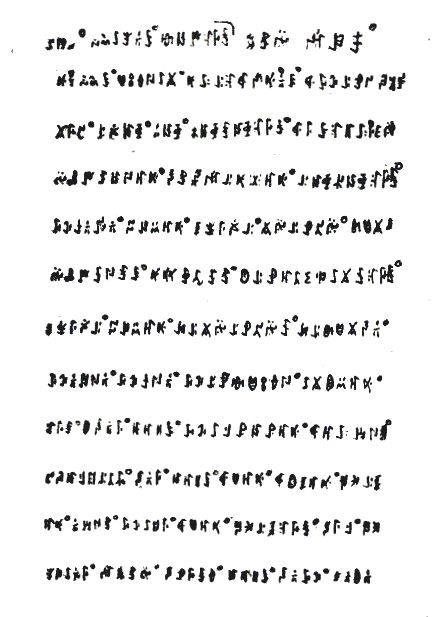
|
"This is an American flyer. He and his folks fly thousands of airplanes to China to help us to fight the Japanese. Already the Americans have killed many Japanese. Therefore, he is one of our best friends.
In case this good friend of ours has to bail out because his machine fails we must help him. People must guard him and immediately escort him and his things to the nearest Magistracy to take care of or to take him directly to General Chiang in Sichang who will in turn give the Lolos silver, salt, cloth and flag of honor in the way of rewards.
If the natives neither take the men to report to the Magistrate nor to Gen. Chiang, the natives will be bombed by airplanes and punished by strong troops of the National Army. Hurting or insulting the flyers will be punished in the same way."
The order is signed CHIANG KAI-SHEK, Director of the National Military Council, using his original "Chop" (seal).
The page below left explains the use of the Pointie Talkie in Lao. Later versions of the Pointie Talkie contained pictures. The picture below right depicts native Chinese helping American flyers defend themselves against the Japanese. Pictures were useful when the native Chinese encountered were illiterate. One picture is worth a thousand words
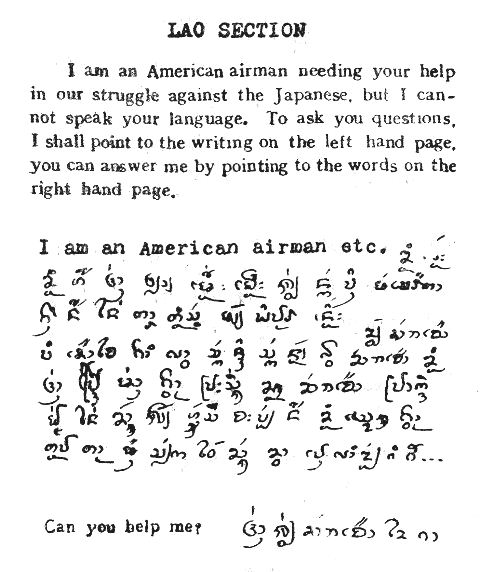
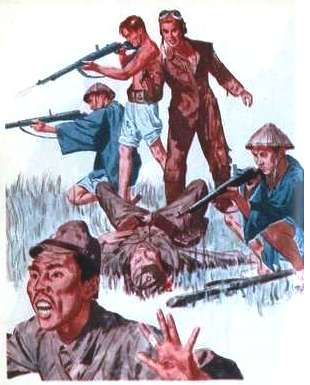
|
Rescue Panel Codes were provided on the inside back cover of the booklet (as in the sample below). Rescue Panels were to be used for visual communication with search planes.

|
In the photo below, soldiers communicate (or at least attempt to) using a version of the Pointie Talkie.
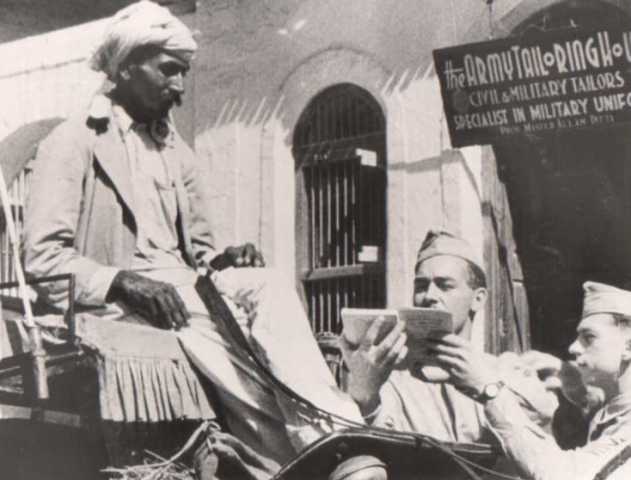
|
Just how useful the Pointie Talkie actually was depended on who the flyer met up with. The fact that it exists at all indicates it was of some use. Even if the natives were not able to read, they most likely could recognize the characters as Chinese. The later versions with pictures surely helped to get the meanings across.
Hundreds of downed flyers were helped backed to friendly territory by the Chinese people, who recognized the sacrifices made by Americans in the fight against the Japanese.

Special thanks to S/Sgt. Nick Sanchez, USAAF and Past Commander, Heart of the Hills Basha,
China-Burma-India Veterans Association, for providing the booklet on which this page is based.
Copyright © 2004 Carl Warren Weidenburner
TOP OF PAGE ABOUT THIS PAGE CLOSE THIS WINDOW